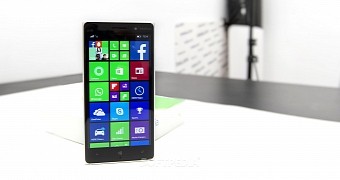Windows head Terry Myerson will be leaving Microsoft in the coming months, and in a goodbye letter published today, he provides a quick look at the years spent within the software giant, including thoughts on the failed Windows Phone platform.
Terry Myerson was one of the first Windows Phone leaders and a pioneer in the competition against Android and iOS, but in this letter, he admits that Microsoft just couldn’t catch up with its rivals.
“Then came October 2008. Over a year earlier, just prior to the iPhone launch, I was personally involved in negotiating the Exchange ActiveSync license with Apple. I was carrying a 2007 v1 iPhone (which I still have in my office today). I was an outspoken lover of smartphones and knew how important they would be,” he says.
“Enabling mobile connectivity was a key focus of Exchange. Android launched that September. But what I remember most vividly, was the Friday when Andy Lees and Robbie Bach asked me to lead Windows Mobile. I knew we had so much work to do on our non-touch no-app-store Windows Mobile effort. I was honored, and more than a little terrified. Ten days later my office moved across campus.”
Windows Phone was based on innovative ideas
Myerson goes on to explain that despite the demise of Windows Phone, the platform had its very own strong points, and one of them was the attention that Microsoft paid to the mobile user experience. There were also several ideas that never came to be, he says, and despite Microsoft’s efforts to make mobile a competitive solution, everything failed due to the fast growth of its rivals.
“We innovated in phone user experience. We had innovative plans for the business model that never came to light. We worked hard. Really hard. But the industry moved forward faster than we could catch up,” he continued.
In the end, Myerson says that one of the things that could be blamed for Windows Phone failing to compete against Android and iOS was the platform that it was based on. Windows CE just had too many drawbacks that had to be addressed, and this never allowed Microsoft to make Windows Phone an alternative to Google’s and Apple’s mobile operating systems.
“Looking back at this phase of my career, my biggest learnings were that success requires a special composition of business model, user experience, and technology. We had a differentiated experience, but it’s so clear in hindsight that the disruption in business model which Android represented was enormous, and that building our early versions of Windows Phone on an incomplete Windows CE platform, designed for small embedded systems, left us too hobbled to ever catch up,” Myerson says.
The Windows 10 Mobile push
Microsoft gave one last attempt at revamping its mobile push with the release of Windows 10 Mobile and new-generation flagship devices in October 2015. But just like its predecessors, Lumia models lacked in terms of performance and features as compared to iPhones and high-end Android models, despite Microsoft still remaining a leader in innovation with features like Windows Hello.
The poor software support, however, coupled with developers not being committed to the platform, contributed to a mix of issues that never allowed Windows 10 Mobile to grow. The lack of apps remained one big problem which eventually pushed users to Android and iPhone en masse.
Windows Phone eventually failed, and despite Microsoft trying to keep it alive for many years even after Myerson was no longer in charge of the platform directly, attracting users and developers proved to be an impossible mission. Windows 10 Mobile is currently in maintenance mode, and only security updates are being shipped until mid-2019 when it’s going to reach end of support.

 14 DAY TRIAL //
14 DAY TRIAL //